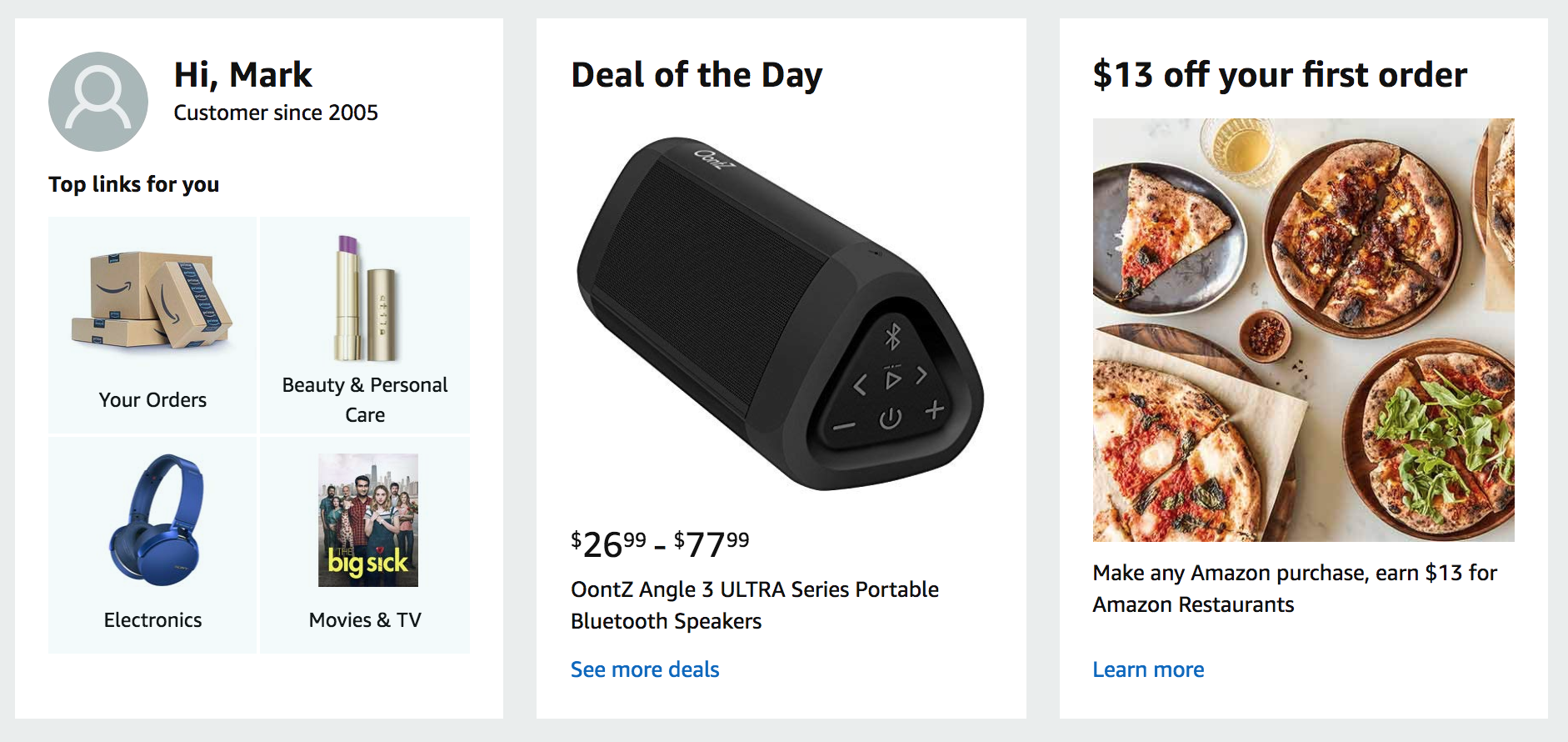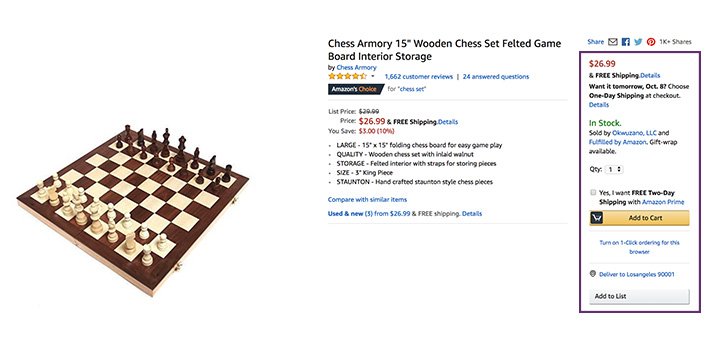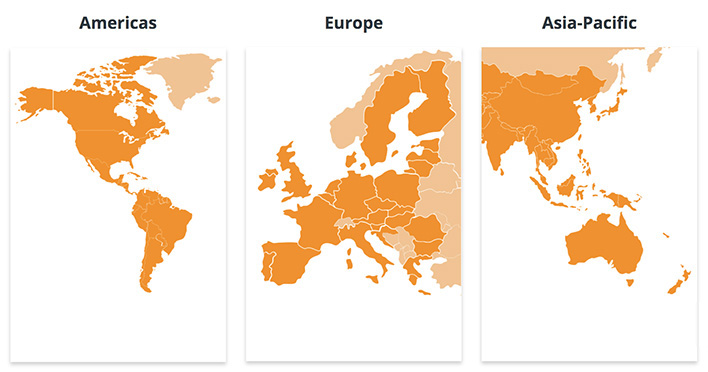What does it mean to be disruptive?
It’s synonymous with words like groundbreaking, innovative, and revolutionary – all words that we associate with Amazon.

Since the world’s largest e-commerce marketplace opened its metaphorical doors in 1994 (and its real-life doors in 2018), it’s changed how consumers shop, and how sellers, both big and small, compete for shoppers’ attention and dollars. Even now, almost 25 years later, Amazon is continually and dramatically transforming how e-commerce operates around the world.
As an Amazon seller, it’s critical you understand how Amazon is driving the evolution of retail and determine how you can use this information to your advantage to scale your own business.
Worried? Don’t be! Every week we’ll highlight one way Amazon has disrupted the retail industry and bring you in-depth, clearly written information about how this affects retail and online sellers like you.
Here’s what you have to look forward to over the next 7 weeks.
Week 1: A personalized shopping experience.

Amazon is used by 92% of online shoppers. Customers appreciate that Amazon makes shopping easy, and Amazon uses this fact to their advantage.
Amazon knows what sells and what doesn’t because they monitor the searches and purchases each user makes on their platform. The more products and services a shopper purchases, the better their customized picks become. You can see this customized content in sections like Recommended for You, Top Picks, and Interesting Finds. These offerings are so effectively curated to each shopper’s tastes that they generate a significant amount of additional sales.
For Amazon sellers, product presentation and reviews are crucial. We’ll show you how to understand how Amazon shoppers respond to the content on your product pages, and how to describe your products so that Amazon presents them to the right people.
Week 2: Super-fast shipping.

Amazon was the pioneer of two-day shipping when it introduced Prime membership in 2005. Today, most customers expect both free and efficient shipping with 79% of Prime members citing “free two-day shipping” as the most important perk of their membership. Shipping times influence which sellers customers choose to purchase from and what platform they ultimately make their purchase on.
According to a 2018 report by the National Retail Federation, 68% of online shoppers expect free shipping even on purchases of less than $50, with 47% saying they typically back out of a purchase if shipping isn’t free.
We’ll go more in-depth on customer shipping preferences and how brick-and-mortar-based companies are keeping up.
Week 3: The Buy Box.

One of Amazon’s leadership principles is customer obsession. They want their shoppers to have the best experience and find products at the best prices.
As a seller, you see this philosophy in practice every day as you compete not only for the best prices but also for the Buy Box. The Buy Box is responsible for over 90% of all Amazon purchases.
We’ll give you our top tips on keeping your prices competitive so you can attain the buy box.
Week 4: Expansion into grocery.

While Amazon gradually grew its grocery option through programs like Amazon Pantry and Amazon Fresh, it launched itself fully into this market with the acquisition of Whole Foods in August 2017.
This purchase expanded the variety and availability of food options on Amazon. In fact, 40% of Amazon users would now consider purchasing their groceries online. It has also created more opportunities for those selling perishable and non-perishable food products.
We’ll look further into the implications this addition to the Amazon family has on food sellers and suppliers and show you what you can do to take advantage of this growing market.
Week 5: A marketplace open to all sellers.
 Amazon likes to think of itself as the great equalizer. It’s a marketplace where small independent sellers from all over the world are able to sell right next to household names. There are benefits and losses in this environment. While small sellers can reach customers and build a following across states and countries, they have to battle the larger budgets and names of recognizable brands.
Amazon likes to think of itself as the great equalizer. It’s a marketplace where small independent sellers from all over the world are able to sell right next to household names. There are benefits and losses in this environment. While small sellers can reach customers and build a following across states and countries, they have to battle the larger budgets and names of recognizable brands.
Our tips will help you remain competitive and learn from the shopper search trends in our extensive database.
Week 6: Expansion into fashion.

Amazon has long been interested in the fashion industry and has quietly launched in-house brands over the past several years. Many shoppers aren’t even aware that they’re buying clothes made by Amazon!
In addition to their in-house brands, Amazon is partnering with large brands like Nike and J.Crew to bring high-end fashion to shoppers at a fraction of the cost. And with 25% of clothing sales in the UK being made online, there’s space for this industry to grow.
In an increasingly crowded space, we’ll help you discover what you can do to stand out and succeed!
Week 7: A new focus on artisanal products.

While Amazon may be partnering with large companies, they’re also making an effort to capitalize on small sellers and the maker movement.
The Amazon homepage now highlights a new storefront each week. Each spotlight consists of a short video about the company and promotes their product listings below. The landing page for the featured storefront also drives traffic to one-of-a-kind, family-focused, and women-owned businesses, and to Amazon Launchpad where start-ups can showcase innovative new products.
Amazon’s U.S. site receives over 2 billion visits each month, providing a large customer base small sellers wouldn’t be able to reach otherwise.
You’ll learn what this new focus could mean for the future of Amazon and its smaller sellers, and how to benefit from Amazon’s offerings for artisans.
Stay tuned!
We’re excited to share this new series of posts with you. If you have questions about one of our topics, please let us know! Check this space weekly to follow along with us.

